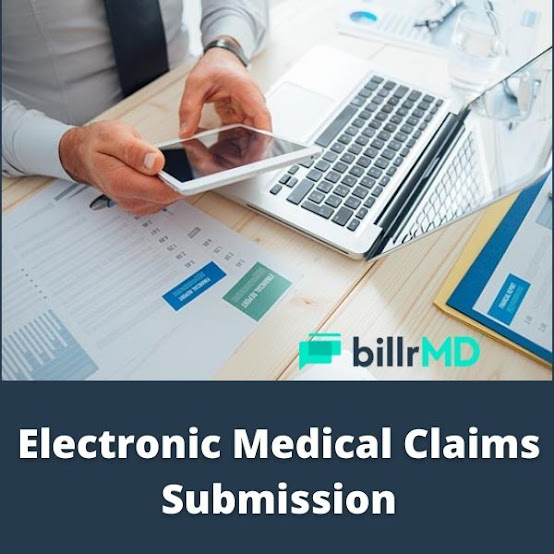Advanced Guide To Electronic Medical Claims Submission
Understanding how to appropriately use electronic medical claims submission for NPP services is critical to having a profitable and efficient medical practice. Registered nurses with a Master's or Doctor of Nursing Practice degree are nurse practitioners (NPs) (DNP). PAs are certified (PA-C) and often have a Master's degree. These mid-level clinicians are employed in medical offices for a variety of reasons, including the following:
Lower salary expenditures (as compared to a physician).
Lower overhead costs.
Increased patient volume.
Lower insurance and liability costs.
Digital electronic claims medical billing software benefits both the patient and the provider by providing a consistent and up-to-date experience for all parties and enabling patients to actively participate in their care.
What Is The Purpose Of Electronic Claims Submission?
Maintaining all of the billing, scheduling, clients, insurance, and medical data in the correct order can be a difficult chore for a medical business. Healthcare businesses use the electronic claims submission to streamline their day-to-day operations in the medical field. When looking for the correct software, it is critical to seek for crucial features that will allow your team to fully utilize the platform. The top two advantages of practice management software are streamlined patient scheduling and practice billing administration. Because these two have a direct impact on the revenue cycle of the practice, it is critical to select software with the finest time-saving capabilities. The billrMD system detects claim errors early and returns them to you for correction and resubmission within 1-2 days.
Consider the following top time-saving features of the practice management system that provide a significant benefit to today's medical practices.
Thorough scheduling - It is critical to look for the best electronic medical claims submission management software with extensive scheduling capabilities. This would include features such as a multi-view calendar to enable alternative viewpoints on the schedule, drag-and-drop appointment scheduling, and color-coded views to make the data more intelligible. This type of feature aids in the simplification of the more sophisticated procedure of medical practice.
Patient portal online - An online patient portal is a secure website that allows patients to access their complete health information at any time, as long as they have a reliable network connection and a device that can obtain their data. This tool will allow patients to learn more about their recent visits, prescriptions, and any upcoming appointments. With the use of this web portal feature, certain advanced Practice management systems allow patients to make payments and arrange appointments.
Compatible with EHR workflows - A practice management system focuses on tasks such as medical billing, scheduling, and payment, whereas a web-based practice management software provides clinical data capturing tools. However, perfect connectivity between the practice management system and the EHR system is crucial since it allows practices to reduce data errors, duplicate efforts, and easily capture billable payments based on clinical documentation.
Reminders for appointments through email - It is critical to inform patients of upcoming appointments in order to ensure the best level of attendance. Patients frequently forget about their current appointments and, sometimes, fail to appear at the allocated time. Your practice can save a lot of time and increase its efficiency by using automated appointment reminders. Instead of requiring a person to create a mail as an appointment reminder and call the patients to advise them of the specifics, these automated messages would inform the patients about their appointment timings and details via phone call, SMS, and Email, reducing the amount of canceled appointments.
Verification of insurance - The top practice fusion EMR software can effectively organize and manage insurance information and pain billing. Every management solution will have the basic functionality of storing crucial data such as insurance claims and details. So, in addition to this, look for a solution that has the most advanced technical features, such as insurance verification. This incredible feature will compare claims to an existing database to assure consistency in verifying the crucial plan information. Some solutions also include scrubbing capabilities, which automatically replaces the necessary data in the records.
Secure message system - Some practice management systems provide advanced capabilities that allow patients and healthcare professionals to communicate directly on their desktop or mobile device. This type of private chat system allows patients to ask healthcare providers questions about their treatment and request information.
Available dashboards and reports - Dashboards are useful for practices because they integrate clinical and administrative data, making it easier to engage in CMS quality reporting. The reporting requirements are frequently difficult to comprehend. E-prescribing, electronic referral loops, and clinical data registry reporting are a few examples. As a result, a practice management system provides a dashboard that will be quite useful in gathering correct data. As a result, the practices will be satisfied that they are maximizing their reimbursement while remaining compliant.
Last Thoughts
Before deciding on a practice management system, consider the value it will provide to physicians, staff, and patients. Then go ahead and do it. More than just basic functions, the greatest practice management software offers well-versed solutions. We at billrMD are dedicated to providing the best electronic medical claims submission to assist your teams in transforming their overall practice management in a time-saving manner.




Comments
Post a Comment